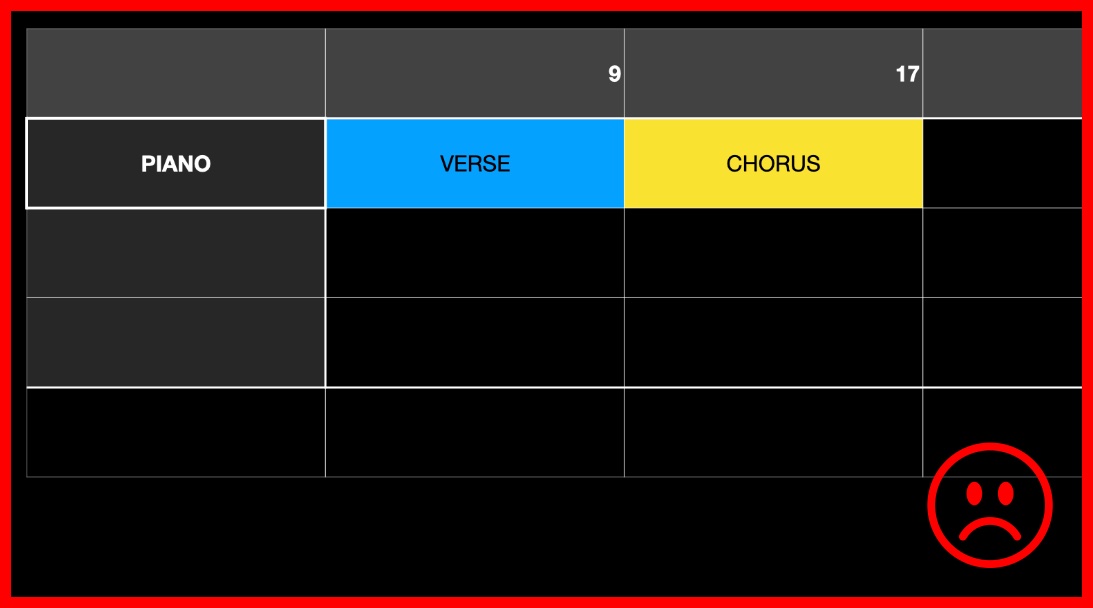About ArrangerKing
Do you often abandon projects after creating something that's not aN AWESOME full track?
- If your answer is "No," you probably don't need this tool.
- If it's "Yes," then ArrangerKing might help you.
I Used to Get Stuck

Hello, my name is Frits Lyneborg. I like to make things. And music in my DAW.
I used to get stuck in the same place every time. Start with a crazy idea, something that sounded incredible. Then, after hours or days of grinding, I’d end up with 8 bars. Maybe stretched into something longer, but it didn’t feel right. No matter how much I tweaked, automated, or forced it, the result was always the same: stuck, frustrated, abandoned projects.
It took me years to understand why.
The problem is deeper than it seems. When you work in a DAW, you have to listen to understand what you've made. And the more you listen, the more your ears die. It’s not just repetition—it’s that endless playback strips away your ability to hear your music clearly. You lose the spark. You start tweaking details to make it better, but without structure, those details lead nowhere. It’s a cycle: tweak, listen, dead ears, repeat.
And here’s the twist: you get stuck because you’re spending all your time listening. In a DAW, there’s no natural flow to guide you. No rules to lean on. You’re building a track without a structure, and the lack of structure forces you to over-listen. It’s why the "8-bar horror" exists.
ArrangerKing was my way out.
With it, you skip the endless listening. You take the raw idea, and in a few clicks, turn it into a complete structure. No guessing, no spiraling into dead ears. Structure first, details later. Once the foundation is there, finishing becomes straightforward.
This tool isn’t about shortcuts—it’s about avoiding the trap that kills creativity. I made ArrangerKing to help myself, and it worked. Now it’s here for you.
Music is rule based - including arranging
"Arranging" isn’t as open-ended as YouTubers (often) teach
It's actually much simpler.

If we set aside Classical music, Avant-garde, Film scores, and sound montages, if we focus on what we typically call "music made in a DAW," (Radio Edits, 12" edits, pop, rock, disco, EDM, House etc) -- Then understanding how this music is arranged becomes straightforward—it all adheres to rules:
- A piece of music contains no more than eight distinct part types (e.g., verse, chorus, etc.). In fact, there are only eight distinct part roles in total -- across genres.
- These part types may have different names depending on the genre.
- Part types can appear multiple times and in any order within a piece of music. For example, even an "intro" can be repeated later.
- Parts of the same type (e.g., all choruses) always have the same length within a single piece of music.
- The lengths of part types are always measured in bars and can only be: 1, 2, 3, 4, 6, 8, 10, 12, 16, 24, or 32 bars.
Does this also apply to your music?
You may not think so. You may worry that following rules could make it feel "blocky." Some may even argue that such rules are meant to be broken or don't always apply.
The truth is, these rules are more fundamental to "music" than chords, notes, rhythm, or genre. You can remove the beat, play out of scale and tune, but break these rules and you no longer create what what we recognize as a piece of (non-classical) "music", then it's "montage" or other "interesting" audio-stuff you create.
Audio following these rules, even your longest, most complex track, or tracks that at first listen don't appear to have structure, will make sense and feel right, feel like it's no longer a "montage" but "a song" as soon as it adheres to these rules.
What is a Part-Focused Workflow?
In most DAWs, we're taught that when we add something new it typically implies working with a specific "instrument" that may or may not play in one or more parts of the track (e.g., chorus, verse, or both).
A part-focused workflow flips this approach. Instead of starting with the instrument, you first create a new part (e.g., chorus, verse) and then assign instruments to it.
Working with ArrangerKing encourages and benefits from this part-based approach. Even in session- or loop-based DAWs, you will naturally shift to a part-based workflow:
- Each part gets its own sounds, effects, and mix settings.
- Final mixing focuses on parts, not instruments, so you are mixing "the verse" and not "a bass
that plays both in the verse and the chorus" .
If you're unsure how to start, don't worry—it’s not as complex as it might sound. For example, if your bass part sounds the same across the entire track, leave it as is. But if you want the bass to change in the verse, just duplicate it and put the verse on its own track. You'll be surprised by how much flexibility and overview this gives you.

